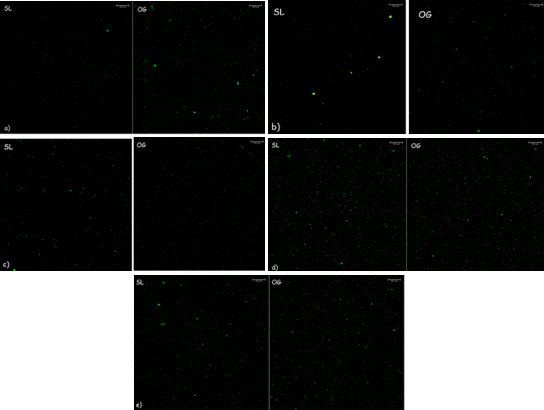Streptococcus Mutans adhesion to dental restorative materials after polishing with various systems: A Confocal Microscopy study
Abstract

Bacterial adhesion and biofilm formation on restoration surfaces could lead to secondary caries and even inflammation of pulpal nerve. Finishing and polishing procedures are crucial to form resistance of materials to bacterial adhesion. The aim of the present study is to compare Streptococcus Mutans (S. mutans) adhesion on restorative materials polished with one- or multi-step systems. 2x5 mm disc-shaped samples were prepared from a resin-modified glass ionomer (RMGI), a compomer, a conventional flowable composite and two flowable bulk-fill composites. Specimens of each group were divided into two groups according to polishing systems (n = 9): One-step (OG) or Multi-step (SL) systems. Surface roughness values were examined by profilometry and one sample of each group were examined for bacterial on confocal laser scanning microscope (CLSM). S. mutans counts were calculated by broth cultivation. Results were analyzed with one-way ANOVA and Bonferroni/Dunn tests. Two flowable bulk-fill composites showed superior roughness values than the conventional flowable and RMGI. Specimens polished with OG system had no significant difference among bacterial counts (p>0.05). After polishing with SL system, Tetric Evo Bulk Flow showed significantly the lowest bacterial adhesion followed by the RMGI and the compomer. CLSM images were in consistent with microbiological culture. All tested materials had lower bacterial adhesion when polished with multi-step system. Multi-step systems should be used with flowable bulk-fill composites to have optimum results in terms of lowering bacterial adhesion and improving surface properties. CLSM images supplies accordance with broth culture of S. mutans thus, this method could be useful on detecting bacterial adhesion.